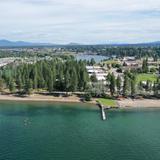- Spokane Falls Community College provides high-quality learning opportunities that are affordable and accessible.
School Highlights
Spokane Falls Community College serves 5,221 students (61% of students are full-time).
The college's student:teacher ratio of 12:1 is lower than the state community college average of 15:1.
Minority enrollment is 32% of the student body (majority Hispanic), which is less than the state average of 56%.
Quick Stats (2025)
- Enrollment: 5,221 students
- In-state tuition: $3,512
- Out-state tuition: $8,702
- Student:teacher ratio: 12:1
- Minority enrollment: 32%
- Source: Integrated Postsecondary Education Data System (IPEDS)
School Overview
The teacher population of 418 teachers has stayed relatively flat over five years.
Spokane Falls Community College
(WA) Community College Avg.
Carnegie Classification
Baccalaureate/Associate's Colleges: Associate's Dominant
Baccalaureate/Associate's Colleges: Associate's Dominant
Institution Level
Four or more years
Four or more years
Institution Control
Public
Public
Total Faculty
418 staff
353 staff
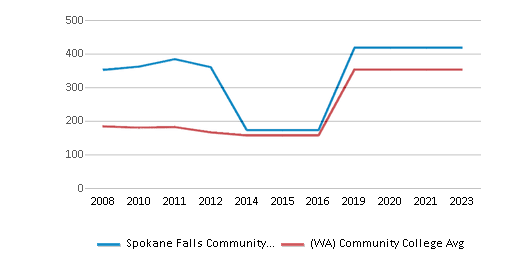
School Calendar
Student Body
The student population of Spokane Falls Community College has stayed relatively flat over five years.
The student:teacher ratio of 12:1 has increased from 10:1 over five years.
The Spokane Falls Community College diversity score of 0.52 is less than the state average of 0.75. The school's diversity has declined by 12% over five years.
Total Enrollment
5,221 students
4,711 students
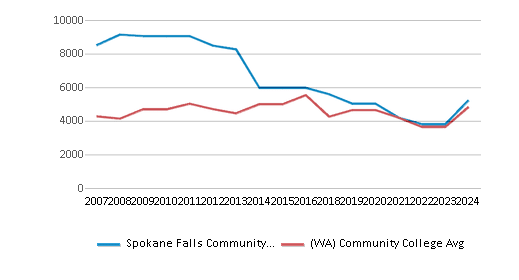
Student : Teacher Ratio
12:1
15:1

# Full-Time Students
3,165 students
2,028 students
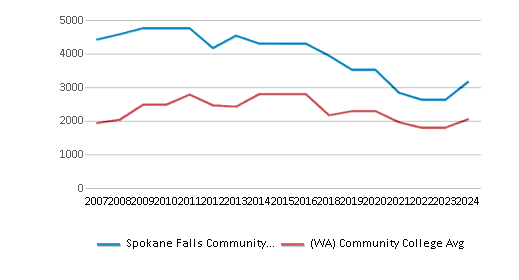
# Part-Time Students
2,056 students
3,179 students
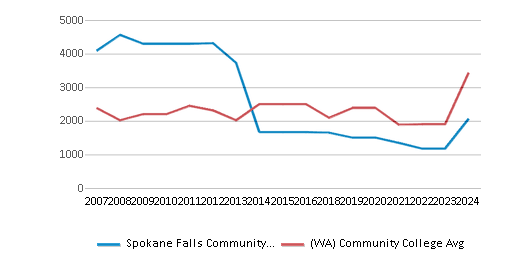
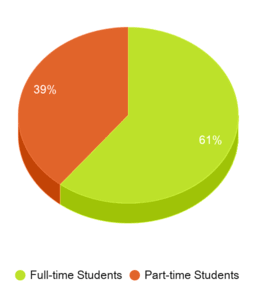
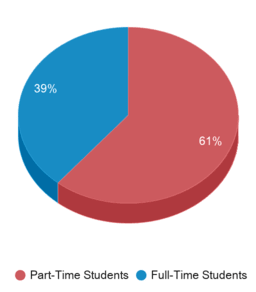
# Enrollment Undergraduate
522 students
494 students
# Full-Time Undergraduate Students
3,165 students
2,028 students
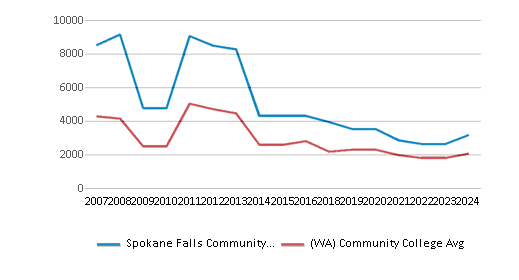
# Part-Time Undergraduate Students
2,056 students
3,179 students
Total Dormitory Capacity
n/a
140 students
% American Indian/Alaskan
1%
1%
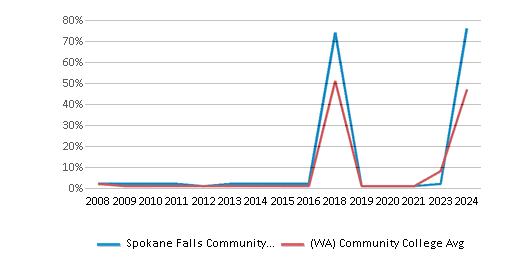
% Asian
3%
10%
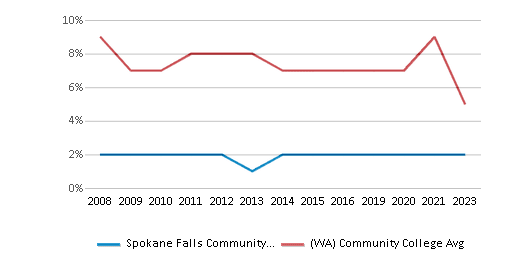
% Hispanic
11%
17%
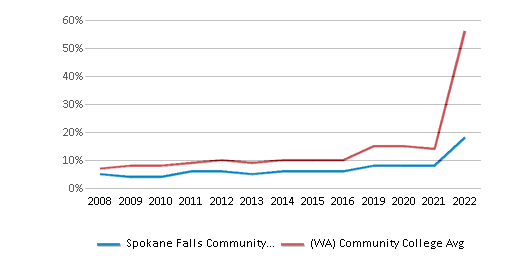
% Black
3%
7%
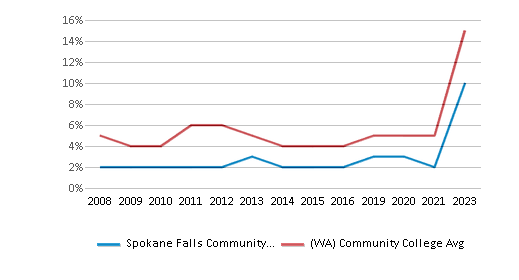
% White
68%
44%
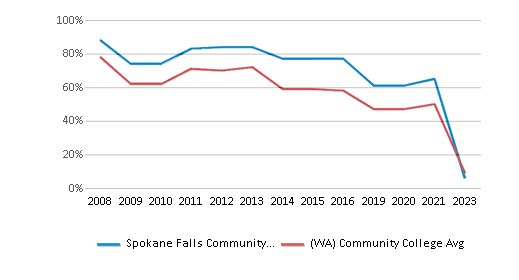
% Hawaiian
1%
1%
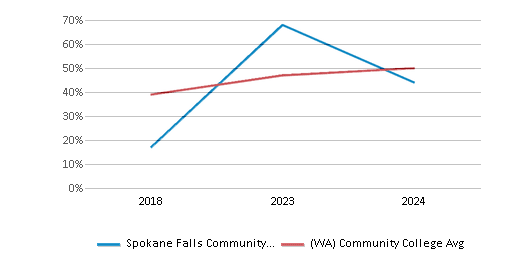
% Two or more races
8%
8%
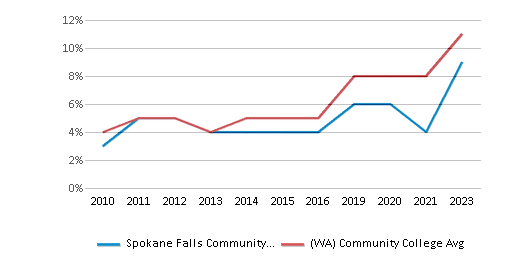
% Non Resident races
1%
3%
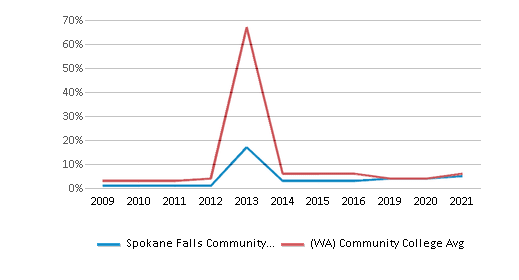
% Unknown races
5%
9%
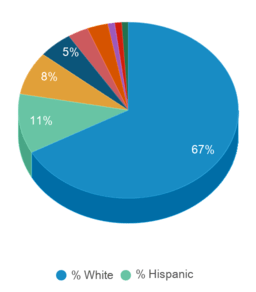
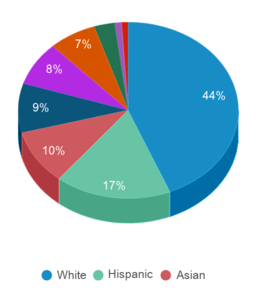
Diversity Score
0.52
0.75
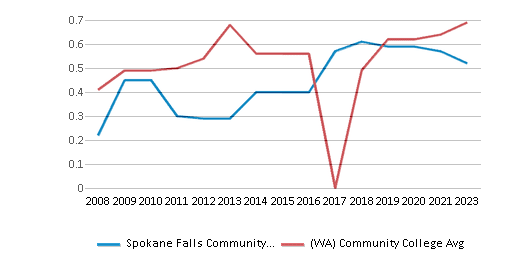
College Completion Rate (Students who graduate in less than 4 years)
22%
30%
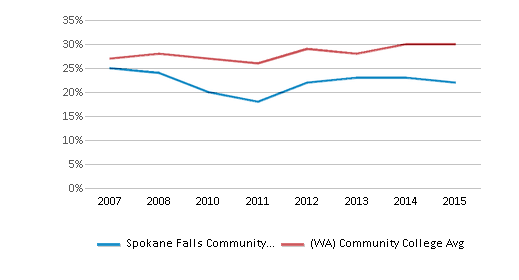
College Completion Rate (Students who graduate in 4 years or more than 4 years)
0.2903%
0.3584%
Average Graduate Earnings (10 Years)
$32,500
$36,400
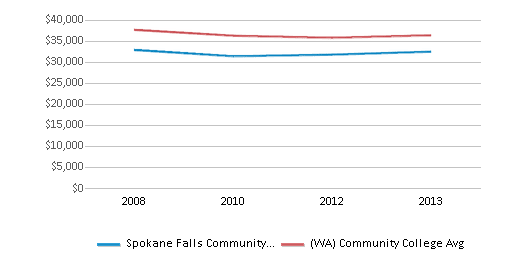
Tuition and Acceptance Rate
The public in-state tuition of $3,512 is less than the state average of $4,105. The in-state tuition has declined by 5% over four years.
The public out-state tuition of $8,702 is more than the state average of $7,359. The out-state tuition has grown by 73% over four years.
In-State Tuition Fees
$3,512
$4,105
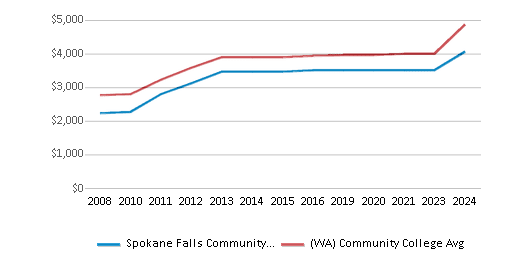
Out-State Tuition Fees
$8,702
$7,359
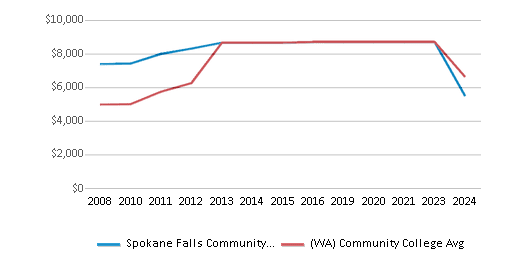
% Students Receiving Some Financial Aid
63%
58%
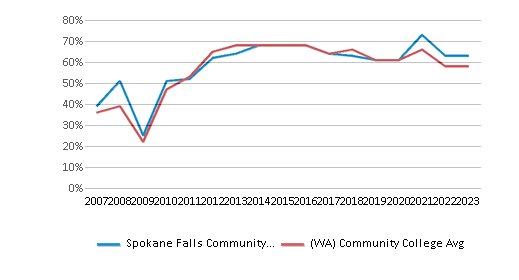
Median Debt for Graduates
$12,000
$11,794

Median Debt for Dropouts
$5,750
$6,192
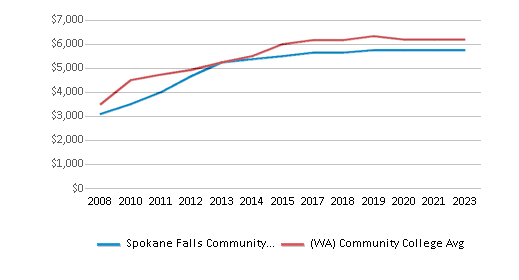
Acceptance Rate
n/a
99%
Source: 2024 (or latest year available) Integrated Postsecondary Education Data System (IPEDS)
School Notes
- Spokane Falls Community College is located in Spokane, Washington. It is situated above the Spokane River on a 113-acre site, with lush trees and expansive lawns. This secluded and unique setting is enhanced with views of distant scenery of neighboring Riverside State Park and the Centennial Trail. The college offers comprehensive academic transfer, professional/technical, developmental, basic skills, and continuing education programs; provides comprehensive student support services; serves diverse communities; increasing flexible and innovative educational opportunities; becomes an active partner in promoting community services of an educational, cultural, and recreational nature; and contributes to the economic well-being of the communities we serve. SFCC is a comprehensive community college offering a strong liberal arts program for those seeking an Associate of Arts or Associate of Science degree. We also have state of the art professional-technical programs designed to prepare you to enter the world of work or upgrade skills in order to keep up with a changing workplace. You can even begin training to become a commercial airplane pilot at SFCC. Our courses and programs have fully equipped laboratories and state-of-the-art equipment. Other learning resources include the library with 30 computer workstations; 10 computer labs, including a comprehensive Math Learning Center, a 200-station Computing Resource Center, and the International Language Center. In 1995, our Technical Arts Building opened with a Competency-based Education Resource Center, Graphic Design Learning labs, and an electronic classroom. The college is accredited by the Northwest Commission on Colleges and Universities.
Frequently Asked Questions
How much does Spokane Falls Community College cost?
Spokane Falls Community College's tuition is approximately $3,512 for In-State students and $8,702 for Out-State students.
What schools are Spokane Falls Community College often compared to?
Spokane Falls Community Collegeis often viewed alongside schools like Spokane Community College by visitors of our site.
In what neighborhood is Spokane Falls Community College located?
Spokane Falls Community College is located in the Fort George Wright neighborhood of Spokane, WA.
Recent Articles

Obtaining Your Bachelor's Degree at a Community College
Explore the evolving landscape of community colleges offering bachelor's degrees, addressing affordability, accessibility, and workforce needs.

A to Z of Community College Certificates and Courses
From business and healthcare to technology and skilled trades, the article showcases the breadth of options available to students seeking to enhance their knowledge, develop new skills, or pursue career advancement.

What is a Community College?
This comprehensive guide explains what a community college is, its history, and its role in higher education. It covers the types of programs offered, differences from four-year colleges, benefits of attending, and important considerations for prospective students, providing valuable insights for those exploring educational options.

